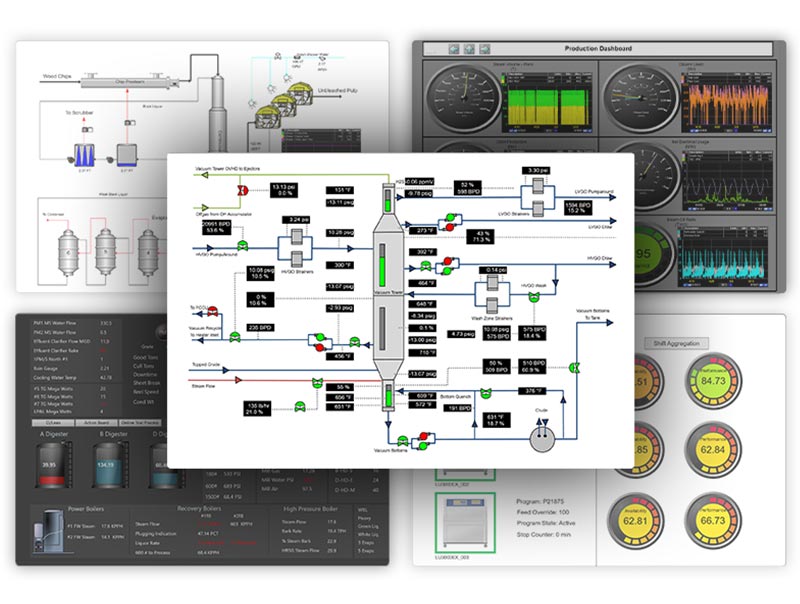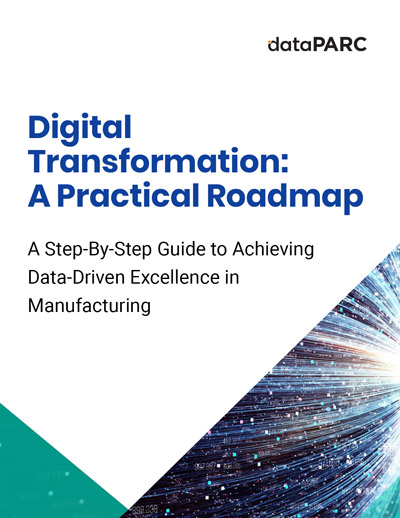Manufacturing acronyms hold the key to streamlining processes, boosting efficiency, and staying competitive in the industry. So, whether you’re a seasoned manufacturing pro or just starting your journey, mastering these manufacturing acronyms is a must.
Unlocking the secrets of manufacturing lingo can be like deciphering a foreign language. From CNC and ERP to IoT and OEE, the world of manufacturing is peppered with acronyms that are essential to understand. Here are a few to get you started:
GUI/UI = Graphical User Interface / User Interface
A “user interface” is anything that enables a person to interact with a machine, though it most commonly refers to a display screen. If the display screen uses icons or other non-text indicators, it is a “graphical user interface.” GUIs are commonly used by software programs running on computers, ATM machines, cell phones, and self-service checkouts at restaurants and stores.
HMI = Human Machine Interface
The term HMI is most commonly used to describe a local user interface for a single machine or single process. An HMI consists of a real-time display of information plus one or more input devices (i.e. a keyboard or mouse) which are used to present information and accept control inputs for the machine or process.
DCS = Distributed Control System
A distributed control system uses computers, sensors, algorithms, and actuators to monitor and manage or control a machine, process, or site. The process inputs and outputs that are used to monitor and control equipment and processes are distributed, as opposed to centralized.
PIMS = Plant Information Management System
A PIMS consists of software and hardware that are used to capture and store process data, and then make that data available to other systems. Plant Information Management Systems are also commonly referred to as data historians, plant historians, or process historians.
LIMS = Laboratory Information Management System
A LIMS is a software-based system that can be used to manage physical samples, store and share data, schedule and assign tasks, and inspect and compile data for reporting or for further analysis.
MES = Manufacturing Execution System
A MES is a software-based system used to document, control, and manage a manufacturing process. It manages and monitors machines, personnel, and support services in real time, and can be integrated with other applications used in purchasing, shipping-receiving, inventory control, and scheduling and maintenance.
ERP = Enterprise Resource Planning
ERP software can be used at all levels of management to track current resources (i.e. raw materials, production capacities, cash) and commitments (i.e. invoices, POs, payroll). It allows data sharing between manufacturing, purchasing, sales, human resources, accounting, and other departmental systems to facilitate decision making and tracking.
KPI = Key Performance Indicator
KPIs are metrics that can be used to judge how well a machine, process, site, or business is performing. When KPIs are used to help make decisions, it is important that they be aligned with strategic goals or objectives. These metrics are commonly displayed on manufacturing kpi dashbaords in a visible areas of the plant floor or common area.
OEE = Overall Equipment Effectiveness
OEE is a set of metrics used to evaluate how effectively a manufacturing operation is being utilized. In mathematical terms, OEE = Availability x Performance x Quality, where Availability accounts for down time losses, Performance accounts for speed losses, and Quality accounts for quality losses. This set of metrics can be used to identify areas for process improvement and the best methods of improvement.
SPC = Statistical Process Control
This is a set of statistical tools and techniques that are used to measure and analyze the variations in a process. The purpose of SPC is to monitor and improve process stability by controlling process inputs.
SQC = Statistical Quality Control
This uses SPC and statistical sampling techniques to monitor and control variations in the products.
QCS = Quality Control System
A quality control system uses hardware and software to monitor product attributes and control process variables that are related to or contribute to product quality.
SP = Setpoint
For a controlled variable, the setpoint is the desired value. Commonly controlled variables include tank levels, fluid temperatures, and liquid flow rates.
DCS = Distributed Control System
A distributed control system uses computers, sensors, algorithms, and actuators to monitor and manage or control a machine, process, or site. The process inputs and outputs that are used to monitor and control equipment and processes are distributed, as opposed to centralized.
PV = Process Variable
This is the current value of a controlled or monitored variable. In process control loops, the process variable is compared to the setpoint, and a control action might be taken based on the difference between them.
OP = Output
In a control loop, an output is a value for a control action. The output might be a valve opening or pump speed.
DCS = Distributed Control System
So, there you have it: 15 common manufacturing acronyms you’ll hear related to process manufacturing. Now, if you hear someone say, “We need to move our KPIs into the new ERP system,” you will know exactly what they mean (or you will soon, after you take a quick look to refresh your memory!).











